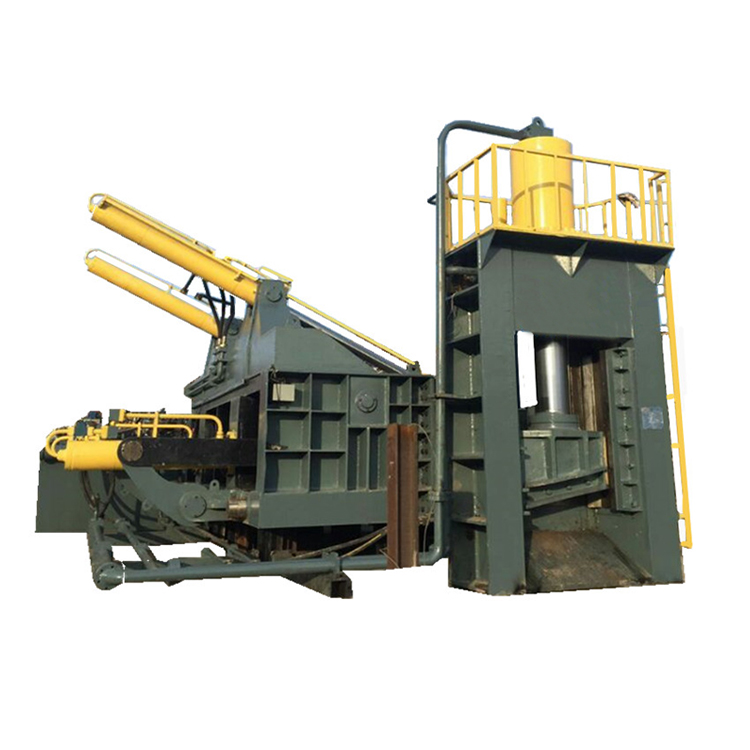Demystifying Metal Bales Cutting Machines: Understanding Their Operation
2024-03-21
In the world of metal processing and recycling, efficiency and precision are paramount. Metal bales cutting machines play a pivotal role in transforming large bales of metal into manageable pieces, facilitating recycling, repurposing, and further processing. But how exactly do these machines operate, and what sets them apart from traditional cutting methods? Let's delve into the fascinating world of metal bales cutting machines and uncover the intricacies of their operation.
Introduction to Metal Bales Cutting Machines:
Metal bales cutting machines are specialized equipment designed to cut through large bales of metal, such as steel, aluminum, and copper, with precision and efficiency. These bales, often formed during the compaction and packaging of scrap metal, can vary in size and density, ranging from small cubes to massive blocks weighing several tons. Metal bales cutting machines are engineered to handle these challenging materials and convert them into smaller, more manageable pieces for further processing.
Key Components of Metal Bales Cutting Machines:
Before diving into their operation, it's essential to understand the key components that make up a typical metal bales cutting machine:
1. Cutting Head: The cutting head is the heart of the machine, housing the cutting tool or blade responsible for slicing through the metal bales. Depending on the specific machine design, the cutting head may employ various cutting methods, such as shear cutting, hydraulic cutting, or saw cutting.
2. Hydraulic System: Metal bales cutting machines often utilize hydraulic systems to generate the force required to cut through the dense metal bales. Hydraulic cylinders or rams apply immense pressure to the cutting tool, ensuring clean and precise cuts even through thick and tough materials.
3. Control Panel: Modern metal bales cutting machines are equipped with advanced control panels that allow operators to adjust cutting parameters, monitor machine performance, and ensure safe and efficient operation. These control panels may feature touchscreen interfaces and intuitive controls for ease of use.
4. Safety Features: Safety is a top priority in metal bales cutting machines, and they are equipped with various safety features, such as emergency stop buttons, safety interlocks, and guarding systems, to protect operators and prevent accidents during operation.
Operation of Metal Bales Cutting Machines:
Now, let's explore how metal bales cutting machines operate:
1. Loading: The operation begins with the loading of metal bales onto the machine's cutting area. Depending on the machine design, the bales may be loaded manually or using auxiliary equipment such as cranes or conveyors.
2. Positioning: Once the metal bales are loaded, they are positioned under the cutting head for processing. Precision positioning ensures that the cutting tool makes accurate cuts and maximizes material utilization.
3. Cutting: With the metal bales in position, the cutting process begins. The hydraulic system applies force to the cutting tool, which slices through the bales with precision and efficiency. The cutting method employed depends on the specific machine configuration and the type of metal being processed.
4. Control and Monitoring: Throughout the cutting process, operators monitor the machine's performance via the control panel. They can adjust cutting parameters as needed to optimize efficiency and ensure quality cuts.
5. Unloading: Once the cutting is complete, the processed metal pieces are unloaded from the machine for further processing or recycling. Depending on the application, the pieces may be transported to storage bins, conveyor belts, or processing equipment for further handling.
Advantages of Metal Bales Cutting Machines:
Metal bales cutting machines offer several advantages over traditional cutting methods:
1. Efficiency: These machines can process large volumes of metal bales quickly and efficiently, increasing productivity and throughput in metal recycling and processing facilities.
2. Precision: With advanced cutting technology and precision controls, metal bales cutting machines deliver consistent and accurate cuts, minimizing material waste and maximizing material utilization.
3. Safety: Built-in safety features and guarding systems ensure the safety of operators and prevent accidents during operation, reducing the risk of injuries and ensuring compliance with safety regulations.
4. Versatility: Metal bales cutting machines are capable of cutting a wide range of metal materials, including steel, aluminum, copper, and more, making them versatile tools for various industries and applications.
Conclusion:
In summary, metal bales cutting machines are sophisticated pieces of equipment that play a crucial role in the metal processing and recycling industry. By understanding how these machines operate and the advantages they offer, manufacturers and operators can harness their capabilities to increase efficiency, improve productivity, and achieve optimal results in metal cutting and processing applications. With their precision cutting technology and advanced controls, metal bales cutting machines are shaping the future of metal recycling and processing, one cut at a time.



